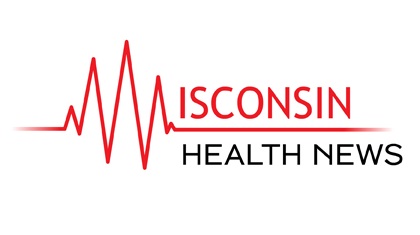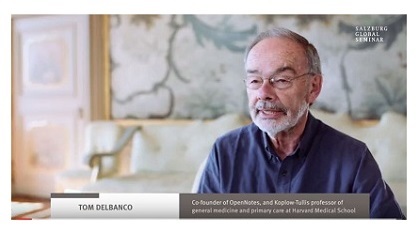Wisconsin hospitals are participating in a new program that aims to help increase access to notes that doctors write about their interactions with patients.
healthcare quality improvement
Salzburg Global Seminar: Tom Delbanco on how patients can save doctors
Tom Delbanco, co-founder of OpenNotes, and Koplow-Tullis professor of general medicine and primary care at Harvard Medical School discusses the origins of “PeoplePower” and the..
Connecting Patients and Clinicians: The Anticipated Effects of Open Notes on Patient Safety and Quality of Care
The OpenNotes movement began in 2010 with the goal of fostering patient engagement in care and enhancing communication among patients, families, and clinicians. In a demonstration and evaluation study, 1 105 primary care physicians in three cities collectively invited 20,000 of their patients to read their visit notes through a secure electronic portal. After the first year, patients reported many benefits, including feeling more in control of their health, being more prepared for visits, and taking their medications with greater adherence. Physicians saw benefits with little burden, and none chose to stop participating when the pilot ended. Today, the OpenNotes movement has grown from 20,000 patients to about 5 million patients at multiple health care institutions nationwide.
US experience with doctors and patients sharing clinical notes
The move to offer patients online access to their clinicians’ notes is accelerating and holds promise of supporting more truly collaborative relationships between patients and clinicians, say Jan Walker, Michael Meltsner, and Tom Delbanco
For decades clinicians have experimented with making medical records available to patients.1 2 3 4 5 6 Now electronic medical records and associated secure internet portals provide patients the opportunity to view test results, medications, and other selected parts of the medical record on line.7 But few patients are offered full access to their records; clinicians’ notes are rarely visible. After a demonstration project showed the acceptability of OpenNotes (www.myopennotes.org) in the US,8 several prominent healthcare providers decided to make clinicians’ notes available to patients online before further formal evaluation. We describe the OpenNotes movement in the US and how sharing notes with patients is spreading. We also underline the case for research to assess the long term effect of sharing notes and the potential to foster improved and truly collaborative care.





